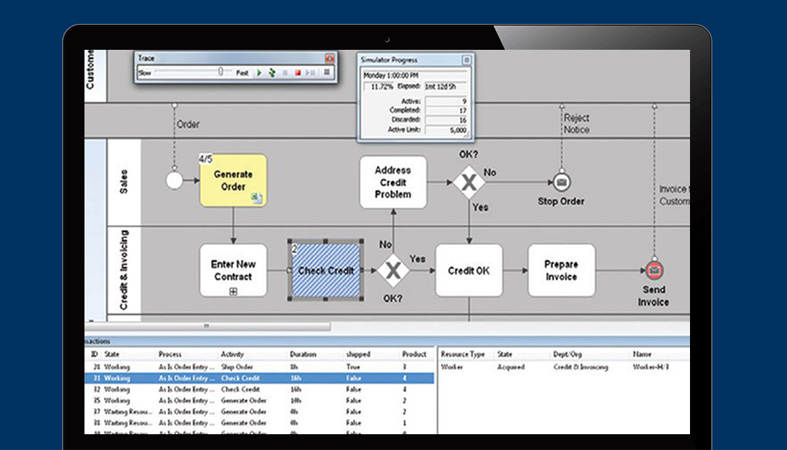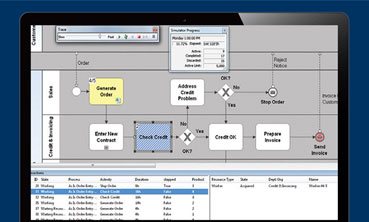
Identifying and analyzing key performance indicators (KPIs) are important for implementing Business Process Management (BPM) for your organization.
When your company is investing in a BPM initiative, it is essential that you analyze the success of the business processes performance.
This is imperative for continual improvement and to innovatively design processes as new technologies are introduced and clients’ journey change. For that, the high-level necessary steps are:
- Establish KPIs that will indicate whether the process is running and performing as planned or if there are any deviations that should be addressed.
- Define indicators and divide them into two groups: short term (daily – operational), and long term (six months and above).
- Determine acceptable ranges and predefined values for each KPI; mainly the target and the unacceptable (green and red zones) to find out whether targets are met, overachieve, or under achieved to be used in the performance management reviews.
Measuring and analyzing performance of the new business processes is especially important to assess the success of the BPM initiative and identify processes or activities in processes that can be further enhanced. Let us have a general definite ion of long- and short term KPIs with some samples.
Read Also | Successful Business Process Management (BPM) Initiatives’ KPIs
Long-Term KPIs
Long-term KPIs are vital as understanding and measuring the performance (actual data) can be more prominent after having had deployed the enhanced process for six to twelve months.
This provides insight of historical data while identifying trends of main processes.
KPIs data may reside in different systems such as ERP, CRM, HRMS which then will be combined in reports and dashboards. Examples of long terms KPIs are:
- The number of each process and documenting it can be a long term KPI. This will help in finding out the necessary time for a process to complete, the seasonality analysis, and the number of documents for describing each step.
- The average time the organization needs for completing a process is another KPI. This gives a fair idea about the necessary timeline for different projects and monitors if the project is exceeding the timeline while repeated again.
- Identifying the bottlenecks and causes for that by analyzing the time for an individual process. It provides in-depth knowledge in case the process exceeds the deadline.
Read Also | Why BPM initiatives are needed today more than ever before!
Short-Term KPIs
Based on BAM (Business Activity Monitoring), these KPIs are designed to provide real-time analysis of each process on a minute, hour, and daily basis. Typical examples of short-term KPIs are:
- The number of process instances created in one hour. This will help you determine if there is a chance of system overflow.
- Necessary time for a particular step.
Once the organization defines the long and short-term KPIs, it is necessary to combine them both in order to get a complete picture of the success of the BPM project.
Read Also | Can you have a successful automation without effective BPM?
One type of KPI does not offer all the necessary information for process analysis. Depending on only short-term KPIs might create misconceptions about the productivity of a specific team.
But long-term KPIs will help to clear the doubt with more analysis of instances which can justify the occasions of exceeding deadlines.
In short, KPIs offer the information which is partially reliable if you consider only one aspect. Combining both short and long-term KPIs will let you detect potential challenges beforehand and discover new approaches for continual improvement.
To know more, speak to our expert at Call: +971 4 292 1978 or inbox us your query at inquiry@i-proserv.com

